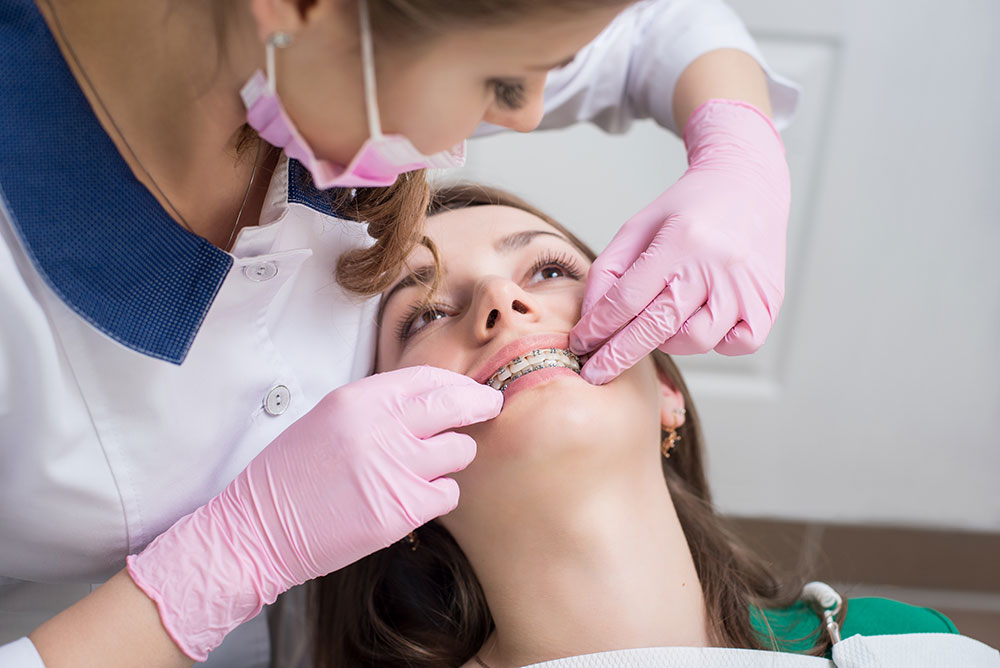Legacy Orthodontics - The Facts
Table of ContentsThe 10-Second Trick For Legacy OrthodonticsThings about Legacy OrthodonticsThe Of Legacy OrthodonticsSee This Report on Legacy OrthodonticsWhat Does Legacy Orthodontics Mean?
In enhancement, we use adjustable therapy timetables, adaptable payment alternatives and an enjoyable, enjoyable experience.An orthodontist is a dentist educated to identify, avoid, and treat teeth and jaw irregularities. They deal with existing problems and are trained to identify troubles that might establish in the future. Orthodontists collaborate with individuals of any ages, from youngsters to adults. Individuals usually link an ideal smile with health.
Malocclusion, or misaligned teeth, can bring about oral issues, consisting of tooth decay, gum tissue illness, and challenging or unpleasant eating. Not everybody is born with straight teeth. If you have a poor bite or huge spaces between your teeth, you might wish to speak with a dental practitioner specializing in orthodontic care.
Legacy Orthodontics - The Facts
( Image Credit Score: DigitalVision/Getty Images) Orthodontists use dealt with and removable dental gadgets, like braces, retainers, and bands, to alter the placement of teeth in your mouth. Orthodontic treatment is for oral problems, including: Misaligned teethBite problems, like an overbite or an underbiteCrowded teeth or teeth that are as well much apartJaw misalignmentThe goal of orthodontic treatment is to enhance your bite.
A healthy and balanced bite ensures you can consume, eat, and talk correctly. While you may consider orthodontists as primarily for kids or teens that require dental braces, they can correct dental issues at any type of age. Orthodontists participate in college, dental college, and orthodontic school. After graduation, they spend 2 or 3 years in an orthodontic residency program.
All orthodontists are dental practitioners, yet not all dental experts are orthodontists. Orthodontic residency programs provide extensive, focused guideline for dental specialists. They concentrate on 2 areas: How to correctly and safely relocate teeth How to properly assist advancement in the teeth, jaw, and faceOnce an orthodontist has actually completed training, they have the alternative to become board licensed.
Not known Details About Legacy Orthodontics
Imbalance, or malocclusion, is the most usual factor individuals see an orthodontist. It is genetic and is the result of dimension differences between the upper and reduced jaw or between the jaw and teeth. Malocclusion results in tooth overcrowding, a twisted jaw, or irregular bite patterns. Malocclusion is generally treated with: Your orthodontist affixes steel, ceramic, or plastic square bonds to your teeth.
Some people need a headgear to assist relocate teeth right into line with pressure from outside the mouth. A retainer is a custom-made tool that maintains your teeth in location.
They can produce extra room in the mouth without having to draw teeth. Orthodontists utilize cables, surgical screws, or plates to sustain your jaw bone.
You may need to see an orthodontist if you have: Crowding or otherwise adequate space for all of your teethOverbite, when your top teeth come by your bottom teethUnderbite, when your base teeth are as well far forwardSpacing or issues with gapsCrossbite, which is when your upper teeth fit behind your base teeth when your mouth is closedOpen bite or an upright space between your front base and top teethMisplaced midline, when the facility of your base and top teeth do not align Fixing a dental malocclusion can: Make attacking, chewing, and speaking easierImprove the balance of our face and your general appearanceEase discomfort from temporomandibular joint conditionsSeparate your teeth and make them easier to cleanse, assisting avoid dental cavity or cavities It's often a dental professional who initially notices misaligned teeth during a regular exam.
See This Report on Legacy Orthodontics

During your very first orthodontic examination, you'll likely have: An oral examPhotos taken of your face and smileDental X-raysPanoramic (360 level) X-rays of your face and headImpressions to create mold and mildews of your teethThese tests will certainly help your orthodontist recognize Get the facts how to wage your treatment. orthodontics. An orthodontist is a dental practitioner who's had training to treat your teeth and jaw
An orthodontist is concentrated on your bite, so something like a cracked tooth would certainly be dealt with by a dental practitioner. Orthodontists are focused on your bite, or the means your teeth fit together, and the straightness of your teeth.
Ever asked yourself exactly how celebrities always appear to have perfectly straightened teeth? The response frequently hinges on the competent hands of an orthodontist. What specifically does an orthodontist do? Orthodontists are oral specialists who concentrate on remedying abnormalities in the teeth and jaws. Their knowledge surpasses simply developing a beautiful smile; it includes enhancing your total oral health and wellness and feature.
Unknown Facts About Legacy Orthodontics

While dental braces are the most frequently recognized orthodontic therapy, orthodontists have a varied toolkit at their disposal. The particular technique picked depends upon the extent of the case, the person's age, and private choices. These tried-and-true braces make use of a system of brackets adhered to the teeth and connected by wires.
These detachable trays are personalized to gradually change the teeth's setting. In cases of slim jaws, palatal expanders can be used to produce room for correct tooth positioning.